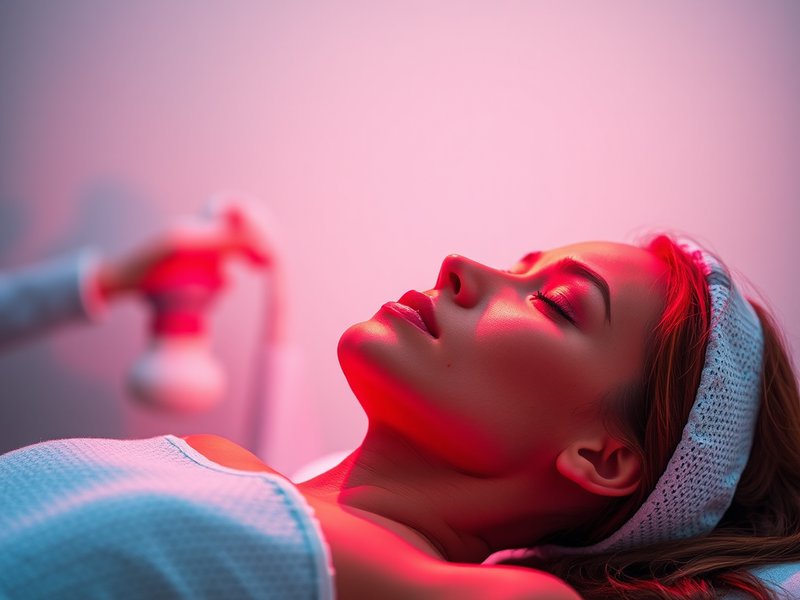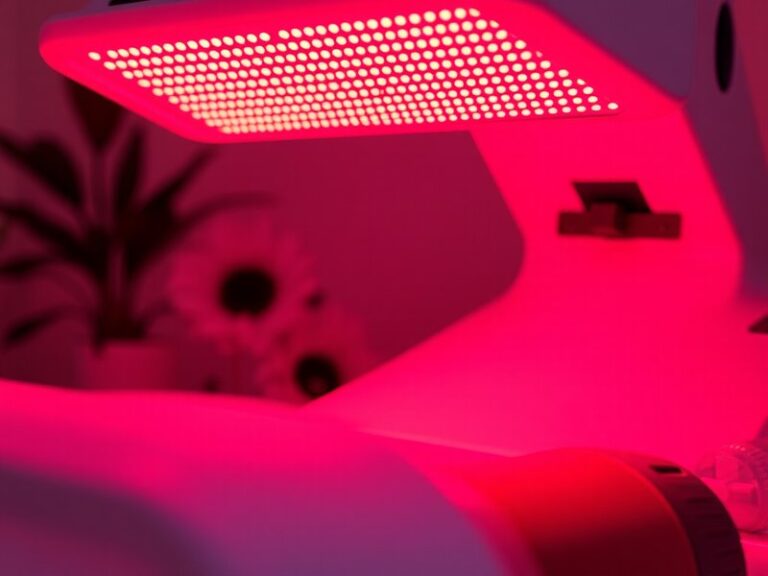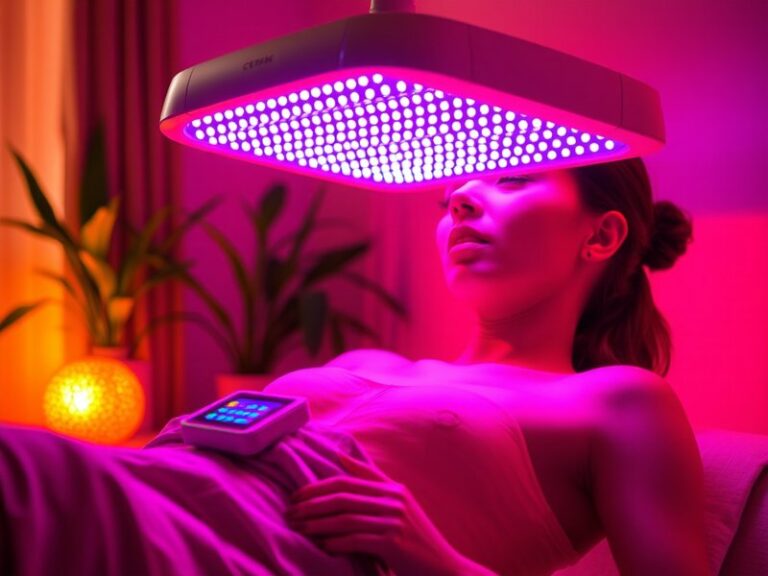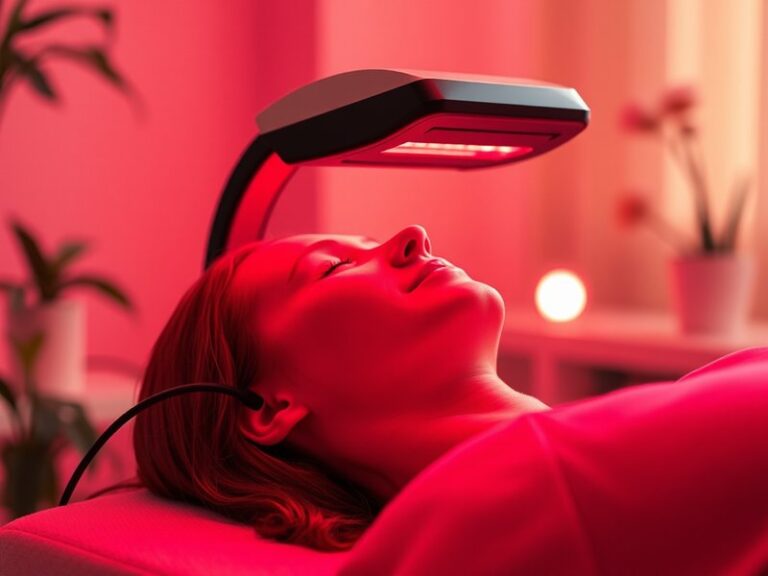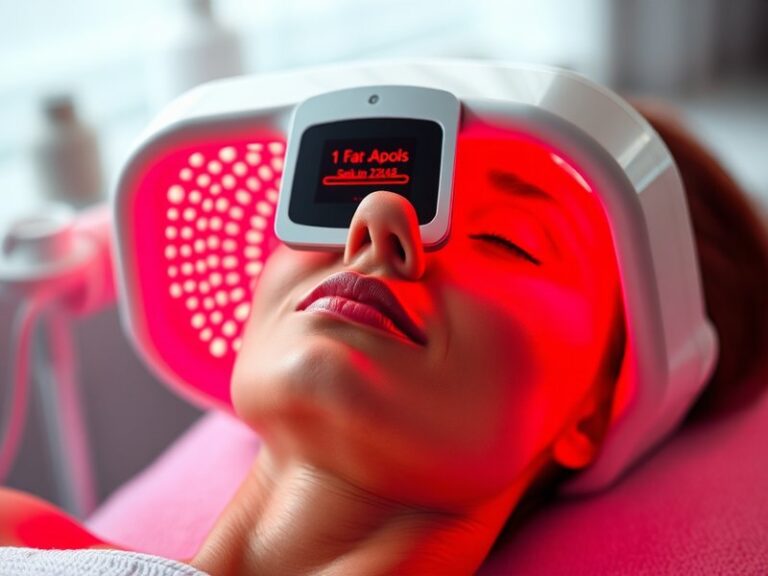Does Sunscreen Block Red Light Therapy?
Does Sunscreen Block Red Light Therapy?
Can sunscreen interfere with the effectiveness of red light therapy?
In this article, we will explore the relationship between sunscreen use and red light therapy (RLT), a growing trend in skincare and wellness. We will clarify what red light therapy entails, its benefits, and if sunscreen poses any hindrance to its effectiveness.
Key Takeaways
- Sunscreen is designed to block harmful UV rays while red light therapy uses specific wavelengths of visible light, mainly in the red and near-infrared spectrum.
- Direct application of sunscreen on the skin can potentially reduce the intensity of red light that penetrates, which may diminish its benefits.
- It is generally advisable to use red light therapy on clean skin, free from topical products like sunscreen, to maximize results.
What is Red Light Therapy?
Red light therapy is a non-invasive treatment that uses low-level wavelengths of red and near-infrared light to promote healing, reduce inflammation, and improve skin health.
This innovative therapy is applied using various devices ranging from handheld tools to larger panels, aiming to stimulate cellular processes such as energy production (ATP) and collagen synthesis. Red light typically falls within the wavelength range of 600 to 950 nanometers and has garnered attention for its therapeutic effects on injuries, skin conditions, and aging.
Scientific Basis
Research indicates that red light therapy can enhance cellular metabolism, speed up tissue repair, and provide anti-aging benefits. The mechanism involves photobiomodulation, where light energy is absorbed by mitochondria in the cells, leading to improved function and rejuvenation.
What are the Benefits of Red Light Therapy?
Red light therapy offers numerous advantages that have made it a popular choice for both clinical and at-home treatments.
Improved Skin Appearance
RLT promotes collagen production, leading to firmer and more youthful skin. Many users report reduced fine lines, wrinkles, and improved skin texture after regular treatments.
Faster Wound Healing
Research has shown that red light therapy can accelerate the healing process for wounds and scars. This can be especially useful for those recovering from surgical procedures or injuries.
Pain Relief and Reduced Inflammation
There is substantial evidence that RLT can reduce inflammation and alleviate pain associated with conditions such as arthritis, joint pain, and muscle soreness.
Enhanced Hair Growth
RLT may also stimulate hair follicles, making it beneficial for individuals experiencing hair loss or thinning.
Is it Possible to Use Sunscreen During Red Light Therapy?
Using sunscreen during red light therapy treatments can be counterproductive as it can create a barrier that might block the therapeutic wavelengths of light from reaching the skin effectively.
What are the Advantages of Skipping Sunscreen?
Allowing the red light to penetrate the skin without interference maximizes the therapy’s effectiveness, promoting better cellular-level responses and overall benefits.
What are the Disadvantages of Using Sunscreen?
Sunscreen is designed to protect against harmful UV radiation. However, when used before red light therapy, it can create a physical barrier that hinders the specific light from penetrating effectively, potentially resulting in a less efficient treatment.
What are the Things to Consider Before Using Sunscreen with Red Light Therapy?
Before using sunscreen in conjunction with red light therapy, consider several key factors.
Skin Type and Sensitivity
Individuals with sensitive skin may need to be cautious about direct sun exposure and may prefer to use RLT without any barrier including sunscreen.
Treatment Goals
Clarifying your objective with RLT can influence whether or not to apply sunscreen beforehand. If your goal is anti-aging or skin rejuvenation, it’s best to avoid sunscreen to maximize treatment results.
Check out our analysis Use of Red Light Therapy?
Timing of Treatments
Consider scheduling RLT sessions away from times when sunscreen is typically applied. For instance, evening treatments may not require sunscreen, allowing for optimal light penetration.
What are the Alternatives to Using Sunscreen with Red Light Therapy?
If avoiding sunscreen is recommended for red light therapy, there are several alternatives for skin protection.
Wearing Protective Clothing
Using protective clothing or hats can shield your skin from harmful sun exposure while allowing for red light treatments.
Use SPF Moisturizers After Therapy
Opt for moisturizers with SPF to protect your skin after RLT sessions, as these allow your skin to benefit from the therapy without a topical blockage during treatment.
For more insights, see Can LEDs be used for red light therapy?
Natural Oils or Creams
Non-comedogenic, natural oils or creams can be applied post-RLT to nourish the skin without interfering with the therapy’s effectiveness during treatment.
Conclusion: Is it Recommended to Use Sunscreen with Red Light Therapy?
In summary, while sunscreen plays a critical role in protecting skin from UV damage, it is generally not recommended to use it immediately before red light therapy sessions due to its potential to block the light’s effectiveness. Understanding the timing and appropriateness of treatments can help users achieve optimal results from red light therapy.
Frequently Asked Questions
Does sunscreen block red light therapy?
Yes, many sunscreens create a barrier on the skin that can prevent red light from penetrating effectively, which may reduce the treatment’s benefits.
How long should I wait after applying sunscreen before using red light therapy?
If you choose to apply sunscreen, it’s best to wait several hours before undergoing red light therapy to ensure that it can penetrate the skin without obstruction.
Can I use other skincare products before red light therapy?
It is recommended to use red light therapy on clean skin, avoiding any products that may create a barrier to ensure maximum effectiveness.
Should I apply sunscreen after red light therapy?
Yes, applying sunscreen after RLT is advisable if you plan to be exposed to sunlight, protecting your skin from potential UV damage.
What are the best practices for optimal results with red light therapy?
For the best results, ensure your skin is clean and free from any topical barriers, follow your device’s recommended usage guidelines, and incorporate it into a consistent skincare routine.
